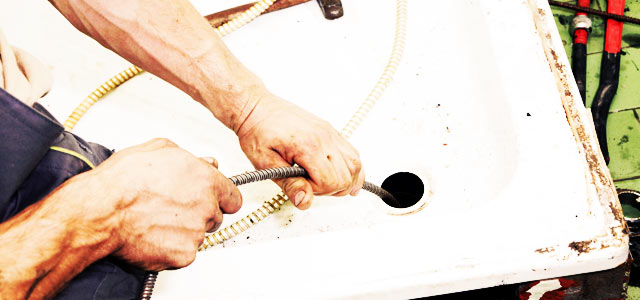Drain snaking is an art. No, really! It’s not something you should attempt yourself unless you have some building, plumbing or “handyman” experience. The reason is that you can actually cause more damage than repairs if you don’t know what you’re doing. Here’s how it works, and why you shouldn’t try doing it yourself.
How Drain Snaking Works
Drain snaking works by inserting a flexible cable of a certain size into the blocked drain for the purpose of dislodging the stoppage so the water can flow freely again. The snake is pushed manually or powered electrically and guided through the drain until it reaches the clog. At that point, the snake can shift or break up the blockage. Alternatively, a camera inserted using a drain snake can transmit images of the problem for the purpose of identifying a solution.
Drain Snaking Tools
Drain snakes come in all shapes and sizes. The most common types available at your local hardware store are:
- Toilet auger – this is used to unblock stubborn toilet stoppages that won’t respond to a plunger. You can also use these to unblock urinals if necessary, and it’s probably the safest of the drain snakes in the hands of an amateur.
- Top snake – these small drain snakes are typically used for showers, bathtubs, kitchen sinks, and laundry washers. You can get manual and electrical versions, and you can rent them from various vendors such as Home Depot. The manual one is fairly basic and can be used to shift small blockages that are near to the entrance of the drain, but the electrical one can do some damage in the hands of the uninitiated.
- Mini-rooter – this comes with around 50 to 75 feet of cable length and is made for clearing drains after removing the trap. These should not be used to clean bathtub or shower drain blockages because they can break the traps.
- Large drain snake – these are used for drains that are 3 inches or more in width, such as from the clean-out to the street. Usually, the cause of this type of blockage is tree roots, so it’s essential to have a strong cable and machine to do the job. Alternatively, your plumber may decide to use a method such as hydro-jetting to thoroughly clean the drains.
Often, this type of equipment can be rented but in many cases, the renter will ask to see some form of qualifications before you will be able to hire it.
Potential Damage
The main problem with drain snaking is the risk of damage to traps, water pipes, and grills. Particularly with electrically-powered snakes, if the force used is too strong for the infrastructure materials it can cause cracks and breaks that may require excavation to repair. This can result in massive expenditure instead of the minimal amount it costs to call out a professional plumber to deal with the problem in the first place.
Your drain repairs don’t necessarily have to be a nightmare. Call your local plumber today for an inspection and an estimate for the work you need to have done.

